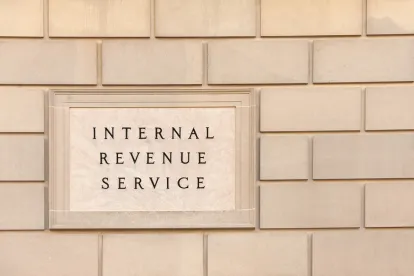The Internal Revenue Service recently issued Notice 2022-53, which provides much needed transition relief in the form of an IRS waiver of the 50% excise tax that could otherwise be imposed upon certain beneficiaries of qualified retirement plans (“Qualified Plans”) or individual retirement accounts (IRAs) who fail to take required minimum distributions (RMDs) during 2021 and 2022.
This client alert highlights key aspects of this IRS announcement.
To set the stage here, in December 2019, Congress passed the Setting Every Community Up for Retirement Enhancement Act of 2019 (the “SECURE Act”). The SECURE Act introduced a new “10-year rule” that applies to distributions to certain beneficiaries who are considered “designated beneficiaries” of Qualified Plan participants and IRA owners who have died (collectively “participants”). As a term of art under the SECURE Act, “designated beneficiaries” are to be contrasted with “eligible designated beneficiaries” – who continue to get the benefit of a life expectancy payout under the SECURE Act. The classes of persons who may be considered “eligible designated beneficiaries” under the SECURE Act are very limited, however, and are confined to the following:
-
the participant’s surviving spouse;
-
the participant’s child who is under the age of 21 (note that the 10-year rule would spring into play once the child attains age 21);
-
a disabled individual;
-
a chronically ill individual; and
-
an individual who is not more than 10 years younger than the participant.
The SECURE Act’s language led most practitioners to believe that designated beneficiaries of participants who have died would not be obligated to take any annual RMDs from Qualified Plans and IRAs until at least 10 years after the participant’s death. This belief stemmed from the fact that the language of the SECURE Act that introduced the 10-year rule referenced the methodology for making distributions that are subject to the “5-year rule” that applies in the case of participants who have died prior to their “required beginning date” (which is generally age 72, subject to certain exceptions) without having named a designated beneficiary. Under the 5-year rule, no annual RMDs are required to be made prior to the end of the 5 year period.
It therefore came as quite a jolt to the estate planning community when the IRS, in proposed regulations issued in February 2022, took the position that designated beneficiaries of participants who died subsequent to the “required beginning date” need to take annual RMDs each year under the 10-year rule. The IRS’s position precipitated the submission of numerous comment letters to the US Department of Treasury by various groups and interested parties throughout the country. These comment letters challenged the correctness of the IRS’s interpretation of the SECURE Act in this respect, and in several instances requested transition relief to prevent the imposition of a 50% excise tax on designated beneficiaries that are subject to the 10-year rule who fail to take their RMDs due to the IRS’s surprising construction of the 10-year rule in its proposed regulations.
Fortunately, the IRS has issued Notice 2022-53, in which it has yielded to the estate planning community’s request for transition relief while it continues to review how to address this issue (and others) in final regulations. The IRS has done this by waiving the 50% excise tax that would otherwise be imposed under Section 4974(a) of the Internal Revenue Code on beneficiaries for any shortfall in the amount of the RMD during 2021 or 2022 in either of the following two circumstances:
-
Where the RMD is to be made to a designated beneficiary of a participant if: (1) the participant died in 2020 or 2021 and on or after the participant’s required beginning date, and (2) the designated beneficiary is not taking lifetime or life expectancy payments (due, for example, to such person also being an “eligible designated beneficiary”); or
-
Where the RMD is to be made to a beneficiary of an eligible designated beneficiary if (1) the eligible designated beneficiary died in 2020 or 2021, and (2) that eligible designated beneficiary was taking lifetime or life expectancy payments pursuant to certain relevant provisions of the Internal Revenue Code.
As is the nature of transition relief, Notice 2022-53 is not the final chapter in the story, as the US Department of Treasury and the IRS continue to review the comments submitted on both this and various other aspects of the proposed regulations under the SECURE Act. In addition, this transition relief only applies where the 10-year rule comes into play in the case of a person who dies after his or her required beginning date – very importantly, it does not provide an automatic waiver from excise taxes for failure to take a RMD in any other circumstances, such as in the case of an eligible designated beneficiary who is still living (as to whom no such ambiguity was presented concerning the need to take annual RMDs each year). But it does provide much needed transition relief for the years 2021 and 2022 as the rules in this area of the tax law continue to unfold.



 />i
/>i
